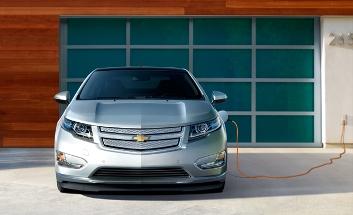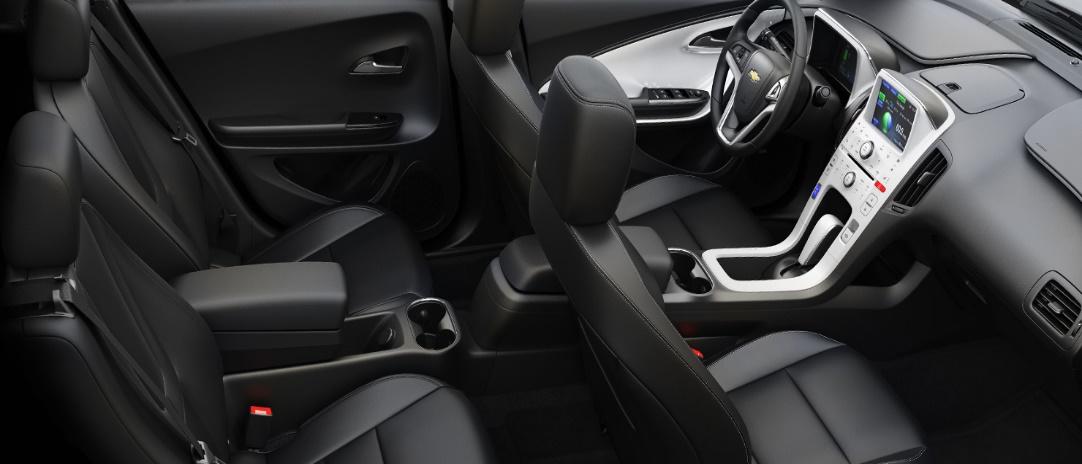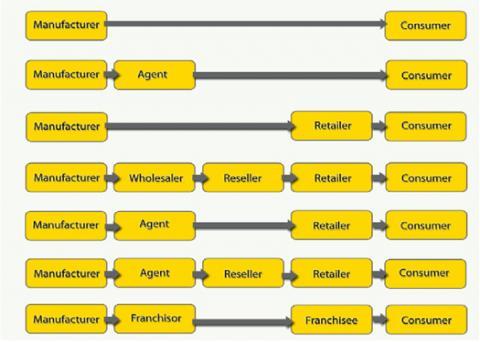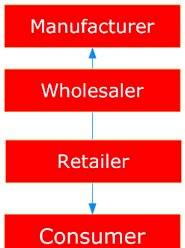Introduction and Background
Designing a product is not successful without factoring in the needs of customers and placing the product in the right place for purchase. With the current economic situations and global climate change due to global warming, vehicle owners are struggling to make ends meet by spending less on fuelling their vehicles. At the same time, the need to protect the environment requires the participation of every person. From this dimension, automobile owners can opt for this vehicle model.
Markedly, the two factors remain crucial in determining the manufacturing of Hybrid Electric Cars. As manufacturers strive to achieve environmental sustainability in production, innovative ideas come into play in several fields. In the motor vehicle industry, for example, electric cars that depend on solar energy continue to get into the market as car manufacturers aim to reduce carbon emission. Even though this remains a noble idea, execution of the program and sale of such cars often face several challenges.
The concept of plug-in hybrids emanated from the Chevrolet Motor Car Company when they made Vue operate partially with the gas engine. The target was to save the environment from the emission of burnt gases from automobiles. Besides, fuel cells have helped in reducing the carbon footprint in the globe. However, the scarcity of hydrogen-filling facilities has made plug-in hybrids to fill the much-required aspect of safety and range.
The Ford Edge HySeries and the Chevrolet Volt Concept has also worked towards ending the use of fossil-fuel. If the whole world can adopt the use of renewable energy sources to produce electricity, then plug-in hybrid cars will have zero emission of greenhouse gases into the atmosphere. In terms of continuous environmental conservation, the future of cars and other vehicles lies in adopting environmentally friendly technological development.
The paper makes it clear that marketing is not just the acquisition of a new customer base; it is a process that takes into consideration the responsibility of underscoring the efficacy of specific change aspects that are typical to business growth (Kotler 68).
Intensive marketing validates a rich way of using the available resources to meet the needs of businesses, and these are in the form of concepts and processes of marketing, marketing segmentation, targeting, and positioning (The Marketing Mix par. 2). Moreover, the paper deals with the efficacies of learning outcomes such as elements of the extended marketing mix, as well as the social dimensions achieved through the learning process.

Product Life Style
The development of Hybrid Electric Cars (HEC) has been necessitated by the continuous change in technology. Moreover, the idea of having automobiles with limited emissions into the environment has led to the manufacturing of the product. In the development stage of the product, the potential consumers, which are the middle-class across the US, will have to know more about the product. This group owns many automobiles that pollute the environment.
In addition, their impact on the economy is great. Therefore, a move to target them with this product will be beneficial to the economy as well as to the entire environment. Notably, at this stage, the entire product still remains an idea. The introduction stage follows the development stage. Creating demand for HEC is vital. According to Kotler (67), the target market has to be aware of the numerous benefits of Hybrid Electric Cars.
For example, the car has the ability to travel longer distances without using the gasoline engine. The gasoline engine can only provide additional power to merge, pass, accelerate, as well as recharge the battery. This is contrary to the conventional cars that travel only short distances purely in electric mode. The Chevrolet Volt Concept uses only the electric motor in driving. Gasoline is not used in driving but is used in recharging batteries.
However, in Vue, the gas engine only operates when the charge in the batteries is fully depleted. Therefore, in plug-in hybrid cars, the electric motor is the primary source of power, while the gasoline engine just aids the operations of the electric motor. After creating awareness among the middle-income earners, there will need to keep branding the Hybrid Electric Cars to remain competitive in the market.
Notably, it is at this point that a strategy like differentiation is applicable to ensure continuous growth. In this mix, Chevrolet can apply product differentiation strategy just like Apple, the Coca-Cola, and IBM Companies. This approach will enable consumers to differentiate their products from those of their competitors. This approach will convince consumers to save on their expenses, as well as ensure a clean and healthy environment.
With the reduction in emissions, HEC reduces airborne infections to human beings. Unlike other vehicle models, HEC will remain as the most preferred brand. After gaining constant market presence, the Chevrolet Motor Car Company will have to put in strategies to build on customer loyalty. This is the maturity stage of the product life cycle; the company has to offer incentives to consumers who shift their loyalty from the competitors.
For example, if a customer switches from the Jeep or Toyota brand to the Chevrolet HEC product, the company can decide to offer free insurance to the customer for two years. At the decline stage, Chevrolet will have to redesign its product to retain the available customers. Clearly, the product will attract high competition, given its numerous benefits, as well as the demands of international organizations and environmental agencies to use products that are environmentally friendly.
Global warming has been a thorny issue at international conferences. Therefore, automotive companies like BMW, Toyota, Nissan, and Chrysler will have to follow suit to manufacture the same product. Being the initiators of the HEC, Chevrolet will have to reinforce the product’s brand image to remain competitive in the flooded market.
Pricing Strategies
Pricing is a very important business strategy that must be considered when strategizing for markets. Profit margin, together with the competing factors in business, may dictate the price of a given product or service, but the rule has to deliver the best that accommodates consumers (Kotler 69). Being the brainchild behind the product, Chevrolet should not set its prices below those of the competitors. However, after analyzing the market trend and product performance, the company can opt to reduce its prices to retain its customers.
Moreover, some elements under consideration within this mix are the associated issues that dictate the pricing formula, such as leasing, financing, as well as other dictates of pricing in a business. Pricing as a strategy will further dictate other emergent factors, such as the stores that keep the products for sale to various consumers.
With the assured competition in the market and the ability of the middle-income earners to pay for the healthy and economical product, the Chevrolet Motor Car Company will have to set the price between $19,999 and $69,999, depending on the model. Clearly, the pricing strategy employs the psychological concept. This will make consumers view the products as below $70,000, yet it is only $1 less for the higher end. For example, the 2015 Chevrolet Volt purchase price can begin from $38,895 (2015 Volt: Electric Cars – Hybrid Cars par. 4).
In taking into account the cost of production, Chevrolet can decide to set a price that assures them of profits. The constant competition in the market will force the company to lower its prices to remain competitive. The company should not go below a certain price in the flooded market, as consumers may assume the Chevrolet’s to be inferior. To charge a competitive pricing package, the company can introduce different after-sales services and packages that accompany the purchase of the product.
For example, the extension of the warranty period and the provision of lubrication oils can be competitive pricing strategies. However, the psychological pricing approach remains appropriate for middle-income earners since they always want to minimize cost in order to invest in other areas. Such prices are within reach of the target group.
At the same time, a report from General Motors indicated that the American Multinational Company delivered over 9.7 million vehicles in 2013. The value is 4% more than the 2012 sales. This signifies the high demand for automobiles, and given the changing climate and economic hardship, the HEC will be a cheaper and healthier option for the target group than the normal versions.
Elements of Promotion Mix
Even after designing the Hybrid Electric Cars, Chevrolet will have to use marketing strategies that ensure that the target consumers receive the relevant information on the product. With the target market being the US where fuel prices are still high, introducing HEC will be a cost-saving mechanism for consumers.
With the main competitors like Ford, Tesla, Detroit Electric, Cadillac, Jeep, and Chrysler using multiple promotional strategies to reach their consumers, the Chevrolet Motor Car Company will have to assume the same approaches, but in a more aggressive manner. In designing an effective advertising campaign strategy, Chevrolet will have to analyze the target market in which its consumers operate in order to improve the profitability of the advertised brand.
The size, profitability, trend, and growth rate of a market are key factors that Chevrolet has to evaluate in order to understand the evolving opportunities and threats that the market presents. The company will rely on TV, radio, billboards, and the internet as key advertisement points. Notably, the move to use online marketing strategies will reduce inventory costs. With the expansion of eCommerce, the Chevrolet.com website will have links to different social media sites in order to attract more customers to purchase the new product.
Just like the competitors, Facebook, Twitter, and Branch will be some of the social media sites that the company will advertise the product. International environmental conferences and international sports events like the World Cup and the Olympics will offer good avenues for advertising the HEC. Such venues would easily transmit the company’s product via radio, television, and printed materials with a high number of viewers and readers.
Even though the company uses the same outlets, the use of such events helps to capture the attention of numerous followers of the events. In addition, the Chevrolet Motor Company can enhance its relationship with customers through emails. The company can use emails to conduct individual marketing by sending ads, building loyalty, creating brand awareness, and soliciting sales. Marketers can send emails to inquire about new customers, increase customer relationships, and advertise products to consumers.
This marketing option is cheap and fast since a marketer can compose one email and send it to several customers at ago. Additionally, as opposed to other media, email messages are highly likely to be read by receivers. Another way of boosting a company’s image is by using blogs. Blogging involves publishing short web content that contains information on the company’s profile. Blogging messages help in marketing a company to consumers.
Customers’ attempts to search for information related to the company on the internet direct them to the firms’ blog. Blogging enhances a company’s visibility to consumers as well as among its competitors.
The entry of online marketing is significant to the sales of the Hybrid Electric Car as many consumers currently have gadgets that can access the online platform (Total US Retail Sales Top $4.5 Trillion in 2013, Outpace GDP Growth par. 1). Moreover, the platform makes it possible for the company and consumers to discuss the features of the product and make purchases at distant places.
The Distribution Strategy
A business has to know its area of operation and acquaint itself with the emergent needs of the customer base under which it operates. As such, transactional, logistical, and functional issues have to be taken into consideration (Kotler 71). Decisions made to this end may include the need to supply the stores with various products that meet diverse customer demands. The distribution channels of the Hybrid Electric Cars are vital to the success of the product in the market.
With the head office in Detroit, Michigan, the company will use its different outlets across the US to avail the product to the target group. Apart from opening its outlets across major cities in all the states in the US, the use of the online platform remains an appropriate channel to reach the expansive market. In the online platform, consumers can view the main features and read the descriptions of the product at any location. The figure below shows some of the inside features of the car that customers can view online.

A consumer who is satisfied with the product via the online platform can receive the car at his/her desired destination since Chevrolet can easily ship to it to a warehouse close to the customer. Since the company is the manufacturer, it will use agents and retailers to reach the middle-income earners across the US. Notably, in all the outlets, there will be agents or representatives to get in touch with the customers easily.
These representatives will provide assistance to the potential customers on how to process payments for the product, as well as offer guidance on the operations of the HEC (Marketing – Place (Distribution) Strategy par. 3). At times, the supply chain can be shortened to eliminate extra costs – it will be from the manufacturer to consumers directly. In terms of logistics, the Chevrolet Motor Car Company will put in place a clear plan to monitor and control the flow of information and the product from Detroit, Michigan, to a consumer at any location.


Works Cited
2015 Volt: Electric Cars – Hybrid Cars. 2014. Web.
Kotler, Philip. Principles of Marketing. Harlow: Prentice Hall/Financial Times, 2005. Print.
Marketing – Place (Distribution) Strategy. 2009. Web.
The Marketing Mix. 2012. Web.
Total US Retail Sales Top $4.5 Trillion in 2013, Outpace GDP Growth. 2014. Web.
